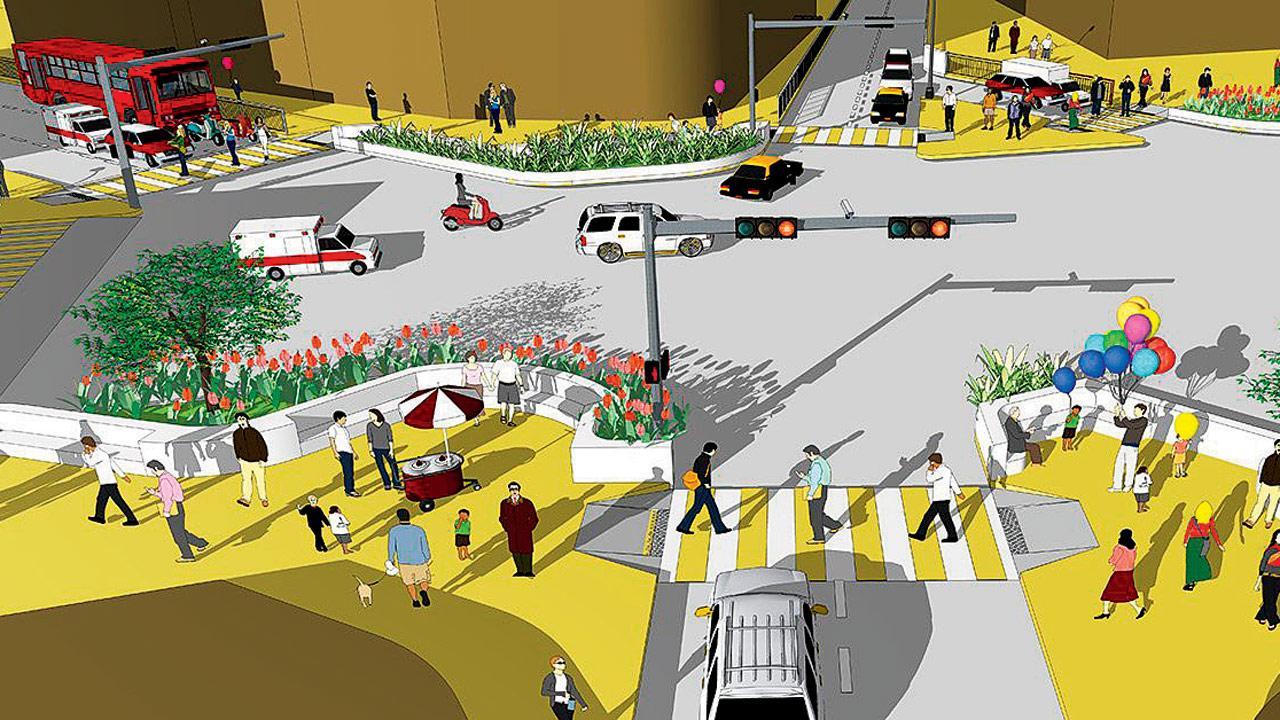A city-based design practice has won a prestigious award for innovatively re-imagining Maulana Shaukat Ali Road as a public space that fosters everyday activities and livelihoods

Island view of Maulana Shaukat Ali Road as re-designed by the firm
The ear-piercing honking, the sight of mouth-watering delicacies, a swish of wooden carts loaded with goods and a horde of people passing by - you'll never know what you'll run into on Maulana Shaukat Ali Road. Once the hotbed of the Khilafat movement, and named after its leader and freedom fighter Maulana Shaukat Ali, referring to the stretch as busy is an understatement. But Mad(e) in Mumbai, an architecture, urban design and landscape consultancy firm founded by Kalpit Ashar and Mayuri Sisodia, has a plan of action - one which has recently won them the You and Your Neighbourhood Jury Award organised by the Charles Correa Foundation.
ADVERTISEMENT
Street design to accommodate shops. Pics courtesy/mad(e) in Mumbai
The competition was aimed at encouraging projects centred on neighbourhoods to create changes in public spaces. The jury comprised noted architects Sandra Barclay, Bill McIlroy, Ilze Wolff, Kapil Gupta and Jagan Shah. Ashar and Sisodia's project, titled Colliding Domains, to redesign Maulana Shaukat Ali Road, kickstarted a year ago as part of an initiative by the Municipal Corporation of Greater Mumbai (MCGM), and was appreciated by the jury for its extensive mapping, incorporating all actors on site and working with the local administration.
MS Ali Road. Pic/Suresh Karkera
MS Ali Road is a 1.5-km stretch that starts from Lamington Road and goes up to JJ Flyover. It is also home to a variety of businesses ranging from restaurants to a timber and steel market. The idea of Colliding Domains was to create a harmony between the road and the activities it facilitates. "A road is always seen as a means to drop vehicles from point A to point B. You never look at it as a threshold for the activities and functions, and MS Ali Road has many," Sisodia shares.
Kalpit Ashar
The first step for the team was to make a drawing of the road - where intricacies had to be captured; because in many cases, as Sisodia explains, one could be walking on a road and hit a light pole that was never visible on the map. So, they factored in details like the location of light poles, restaurants and where workers sat while going about their job. The micro-mapping took them a month's time to execute. "Our team was on the site monitoring each detail. That helps to remain grounded and understand how people are because you're not working in a computer space," she says.
Having realised that the activities taking place on the stretch all conflicted with each other - while people cross, vehicles are loading and unloading goods, for instance - the plan was to then weave them into one fabric. "We didn't want to eliminate any activity because it would create an even bigger hurdle in traffic movement. So each task had to be acknowledged and given its own space," Sisodia explains. Therefore, their plan incorporates a continuous sidewalk, defined crossings, parkings, and pedestrian ramps, among other things, that ensure vehicular movement isn't disrupted.
With work done on the firm's end, the project is now in the hands of the authorities to execute. But the award is a special one for Ashar and Sisodia as they were young interns at Correa's office, and continue to be inspired by him.
 Subscribe today by clicking the link and stay updated with the latest news!" Click here!
Subscribe today by clicking the link and stay updated with the latest news!" Click here!






